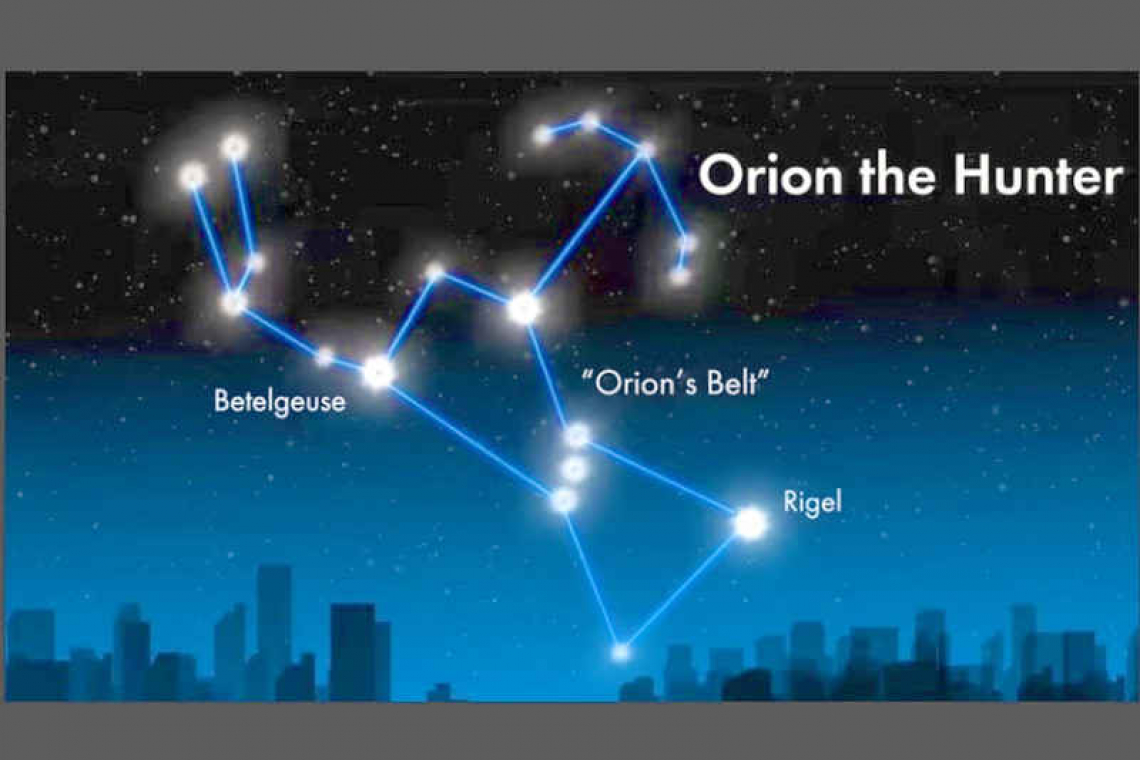~ St. Maarten’s Backyard Astronomy for August 19-21 ~
Sun rises at 5:55am
Sun sets at 6:35pm
Lunar phase: 4th Quarter, Waning Crescent
Moon-rise: 12:10am
Moon-set: 1:42pm
What will you be looking for just after midnight this Saturday? The night sky enthusiasts will be looking for four bright stars, the moon and a planet. This happy collection will be rising in a lovely group just after midnight, so look east and watch the show.
The pre-show starts around 9:00pm when Jupiter rises up from the sky’s eastern edge. Actually, Saturn leads the line-up, already in the sky when the light turns dark. You can find the ringed planet about halfway between Jupiter and the constellation Sagittarius. Recall Sagittarius has a star shape that looks like a “teapot”. Look towards the southeast along a rising diagonal line. Use your binoculars to spot these two planets, and you might even detect the rings of Saturn and the moons of Jupiter.
Meanwhile, as the evening deepens, the hours will bring up the main event: Our happy collection of six celestial celebrities. By 1:30am, the planet Mars will rise into view. Shortly after that, the bright star Aldebaran will follow Mars. Aldebaran is the Eye of the Bull, in the constellation Taurus the Bull.
By 2:00am, the moon will rise up to join Mars and Aldebaran. This weekend, the moon is slimming down, waning as we say, and well worth an admiring study through your telescope or binoculars. A thin moon is good for a few reasons: First, it is not so bright that it washes out the stars; second, the curving edge of light and dark is a great place to focus your sighting scopes – you’ll see the shadows of the craters cast in stark relief along that terminus line; third, everyone loves seeing the crescent moon, the graceful and delicate shape is almost as romantic as a full moon.
If you are still watching, then wow, you get the Night Owl Award! Left of the moon, look for the bright star Capella in the constellation Auriga. This constellation is meant to represent a goat herder holding a young kid in his arms. Capella is the baby goat. Looking over to the right of the moon, we see Orion rising in a reclined position. The hunter has two brilliant stars to add to our happy collection: Betelgeuse, closest to the moon; and Rigel, farther away. Of course, Orion is known for his three-star belt, so why not include them in the party?
This is prime star gazing time – when stars, planets and a crescent moon are all together in a relatively small portion of the sky, you can maximize your efforts to see so much! Marvel at the wonders of our universe and you just might feel like your troubles are tiny in comparison!
Thank you for keeping up with the Night Sky articles, backyard astronomy designed for St. Maarten sky viewing. FYI: If you are out later on in the week, note that each star rises about four minutes earlier each day than written here, and the moon rises 50 minutes later. Night Sky is researched and compiled by Lisa Davis-Burnett. Earthsky.org is a key resource for information and images. Questions or comments? Email This email address is being protected from spambots. You need JavaScript enabled to view it.







